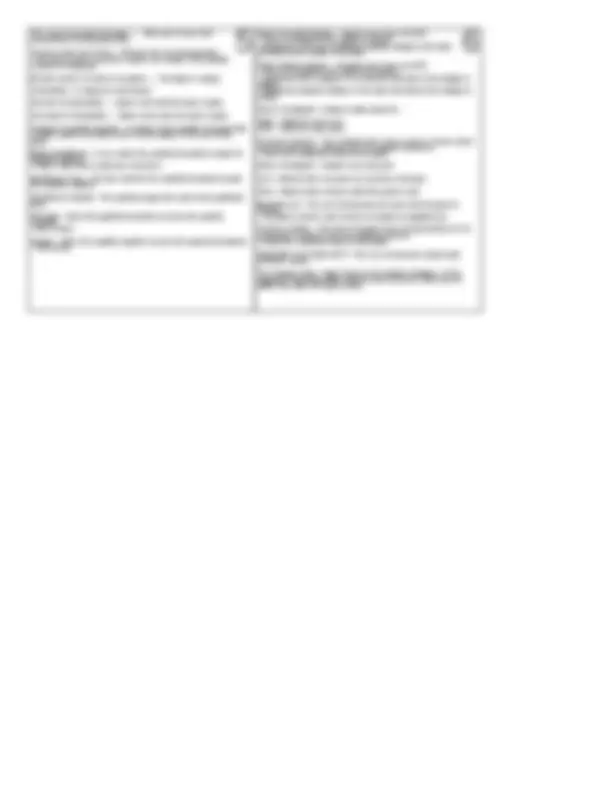
Scarcity - Is the condition that arises because wants exceeds the
ability of resources to satisfy them.
Choices we make... - Depend on the incentives we face.
Economics - Social science that studies the choices that individuals
make as they cope with scarcity, the incentive that influence those
choices, and the arrangements that coordinate them.
Economics way of thinking 1. Choice is a tradeoff
2. Cost is what you must give up to get something5
58
8
3. Benefit is what you gain from something
4. People make rational choices by comparing benefits and costs
5. Most choices are "how much" choices made at the margin
6. Choices respond to incentives
Opportunity Cost - The best things that you must give up to get
something - The highest-valued alternative forgone.
Benefit - The gain or pleasure that something brings.
- Measured by what you are wiling to give up4
.
Rational Choice - Choice that uses the available resources to best
achieve the objective of the person making the choice.
Incentive - A reward or a penalty - a "carrot" or a "stick" - that
encourages or discourages an action.
Consumption Goods and Services - Goods and services that are
bought by individuals and used to provide personal enjoyment and
contribute to a person's standard of living.
Capital Goods - Goods that are bought by businesses to increase their
productivity resources.
Factors of Production - Land, Labor, Capital, and Entrepreneurship
Production Efficiency - A situation in which we cannot produce
more of one good or service without producing less of something
else.
Tradeoff - An exchange - giving up one thing to get something else.\
Specialization - When one person (or nation) is more productive than
another - needs fewer inputs or takes less time to produce a good or
perform a production task - we say that this person (or nation) has an
absolute advantage.
Comparative Advantage - The ability of a person to perform an
activity or produce a good or service at a lower opportunity cost than
someone else.
Market - Any arrangement that brings buyers and sellers together.
Competitive Market - One where the numbers of buys and seller is
large enough that no individual buyer or seller can influence the price.
Quantity Demanded - The amount of a good, service or resource that
people are willing and able to buy during a specified period and at a
specified place.
Demand - The relationship between the quantity demanded and the
price of a good when all other influences on buying remain the same.
Demand Schedule - A list of the quantities demanded at each different
price when all the other influences on buying plans remain the same.
Demand Curve - A graph of the relationship between the quantity
demanded of a good its price when all other influences on buying
remain the same.
Market Demand - The sum of the demands of all the buyer in the
market.
Change in Demand - A change in the quantity that people plan to buy
when any influence other than the price of the good changes.
- That there is a new demand schedule and demand curve
Demand Decreases - Demand curve shifts leftward.
Demand Increases - Demand curve shifts rightward.
Demand Shift Factors - Prices of goods related in consumption
- Income
- Number of buyers
- Tastes/Preferences
- Expectations: future prices, expected future income and credit market
Substitutes - A good that can be consumed in place of another good.
Complement - A good that is consumed with another good.
Normal Good - A good for which the demand increases if income
increases and demand decreases if income decreases.
Inferior Good - A good for which the demand decreases if income
increases and demand increases if income decreases.
Change in the Quantity Demanded - A change in the quantity of a good
that people plan to buy that results from a change in the price of the
good.
Quantity Supplied - The amount of a good, service, or resource that
people are willing and able to sell during a specified period at a
specified price/
Supply - Relationship between the quantity supplied of a good and the
price of the good when all other influences on selling plans remain the
same.
Supply Schedule - List of the quantities supplied at each different price
when all other influences on the selling plan remain the same.
Supply Curve - Graph of the relationship between the quantity supplied
and the price of the good when all other influences on selling plans
remain the same.
Market Supply - Sum of the supplies of all sellers in a market.
ubstitute in Production - Is a good that can be produced in place
of another good.
If the [own] price of a good rises... - The quantity demanded of
that good decreases.
If the [own] price of a good falls... - The quantity demanded of the good
increases.
Demand for a good increases... - If the price of one of its substitutes
rises.
Demand for a good decreases... - If the price of one of its substitutes
falls.
Demand for a good increases... - When the price of one of its
complements falls.
Demand for a good decreases... - If the price of one of its complements
rises.
Greater number of buyers in a market... - The larger is the demand for
any good.
If the price of a good rises... - The quantity supplied of that good
increases.
If the price of a good falls... - The quantity supplied of that good
decreases.
The supply of a good increases... - If the price of one of its substitutes
in production falls.
The supply of a good decreases... - If the price of one of its substitutes
in production rises.
Complement in Production - A good that is produced along with
another good.
The supply of a good increases... - If the price of one of its
complements in production rises.










